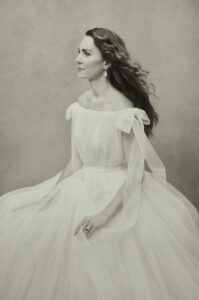 In the wake of the Duchess of Cambridge’s 40th birthday on January 9, a considerable number of articles mentioned the future noble title the Duchess is expected to possess one day: Queen consort. Certainly, the dictionary meaning of the title is pretty clear: the wife of the reigning King, with the male equivalent being Prince consort.
In the wake of the Duchess of Cambridge’s 40th birthday on January 9, a considerable number of articles mentioned the future noble title the Duchess is expected to possess one day: Queen consort. Certainly, the dictionary meaning of the title is pretty clear: the wife of the reigning King, with the male equivalent being Prince consort.
The title of royal consorts’ dates back to A.D. 1707 in Britain, around 1050 in Scotland and around 850 in Ireland: since the union of England and Scotland in 1707, there have been ten royal consorts of the British monarch. With that being said, one must admit that the institution of the royal consort has quite the history behind itself: over the reigns of different monarchs, the role was approached on a rather wide scale.
According to the official website of the Royal Family of Windsor, the consorts’ main role is primarily to provide companionship, moral and practical support to the Monarch. The consort does not hold a formal position in the structure of government and does not see State papers or hold official audiences. Needless to say, royal consorts throughout history, specifically in the 20th century, have evolved the institution of consorts from remaining in the background to establishing their own significant roles.
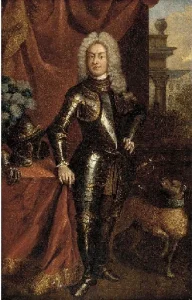 The first one among the British royal consorts is Prince George of Denmark and Norway, husband of Queen Anne. He became a royal consort in 1707, when the Kingdom of Great Britain was established with the Acts of Union. Their marriage was arranged yet relatively happy (according to written historical sources), abruptly ending with the prince’s death at the age of only 55. Their only son and heir, Prince William, the Duke of Gloucester died at age 11- the succession crisis was inevitable.
The first one among the British royal consorts is Prince George of Denmark and Norway, husband of Queen Anne. He became a royal consort in 1707, when the Kingdom of Great Britain was established with the Acts of Union. Their marriage was arranged yet relatively happy (according to written historical sources), abruptly ending with the prince’s death at the age of only 55. Their only son and heir, Prince William, the Duke of Gloucester died at age 11- the succession crisis was inevitable.
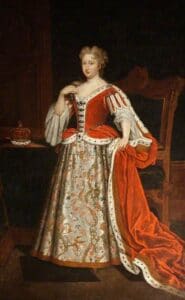
Princess Caroline of Brandenburg-Ansbach, the first Queen consort of British monarchs: her husband was King George II., who inherited the throne from his father George I., following the Acts of Union, in 1727. Caroline was known for her political influence (she served as regent numerous times instead of her son, Frederick, the Prince of Wales when the King was abroad thanks to the Regency Act of 1728) and intellect- far outstripping her husband’s. She established the Library at St. James’s Palace and supported the arts. Her most remarkable achievement is, without doubt, her help of spreading information and popularising the variolation against smallpox by agreeing to let her own children undergo the procedure despite the technology being fairly new.
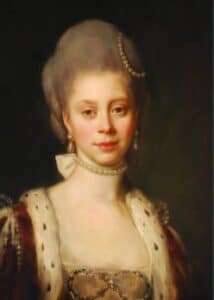 Princess Charlotte of Mecklenburg-Strelitz was the wife of King George III., becoming Queen consort in 1761 upon their wedding. They had 15 children, 13 of whom lived to adulthood. She did not speak any English when they got married: she learnt it quickly but was told not to interfere with politics. She however often made recommendations for offices and kept herself busy corresponding with other royals, including Queen Marie Antoinette. She introduced the Christmas tree to Britain, and it was during that time that the King bought Buckingham House (now known as Palace) as a residence for the royal family.
Princess Charlotte of Mecklenburg-Strelitz was the wife of King George III., becoming Queen consort in 1761 upon their wedding. They had 15 children, 13 of whom lived to adulthood. She did not speak any English when they got married: she learnt it quickly but was told not to interfere with politics. She however often made recommendations for offices and kept herself busy corresponding with other royals, including Queen Marie Antoinette. She introduced the Christmas tree to Britain, and it was during that time that the King bought Buckingham House (now known as Palace) as a residence for the royal family.
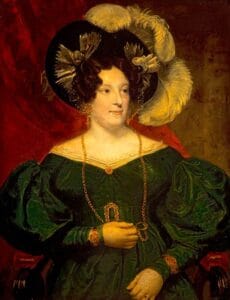
Princess Caroline of Brunswick-Wolfenbüttel was technically the second wife of King George IV.: his first marriage to Maria Fitzherbert was declared invalid. She married the then Prince Regent in 1795 and they had a daughter (she died young, during childbirth), but they separated shortly after, with Caroline relocating to Italy. When George became King in 1820, he was desperate for a divorce. Much to his dismay, Caroline returned to Britain and “won over” the masses; their divorce was withdrawn by the Liverpool ministry. Despite that, the King banned her from attending the coronation ceremony therefore she was never crowned: she died only three weeks later in London.
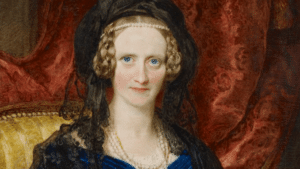 Princess Adelaide of Saxe-Meiningen was Queen of the United Kingdom and Hannover from 1830 to 1837 as the wife of King William IV. The couple had no children surviving infanthood despite the King fathering at least ten illegitimate children earlier. She was beloved by the nation and often (probably unsuccessfully) tried to influence her husband in politics too. She outlived her husband by twelve years, being known as Dowager Queen in her later years.
Princess Adelaide of Saxe-Meiningen was Queen of the United Kingdom and Hannover from 1830 to 1837 as the wife of King William IV. The couple had no children surviving infanthood despite the King fathering at least ten illegitimate children earlier. She was beloved by the nation and often (probably unsuccessfully) tried to influence her husband in politics too. She outlived her husband by twelve years, being known as Dowager Queen in her later years.
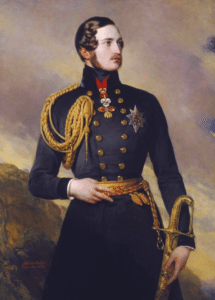 Interestingly enough, only one of the ten British royal consorts had received the title through an official ceremony: Prince Albert of Saxe-Coburg and Gotha, husband of Queen Victoria, was given the title of Prince Consort in 1857. First, the suggestion for the title was King consort: it had however been respectfully declined by the Government, as Prince Albert possessed none of the peerages of the United Kingdom. Queen Victoria depended on Albert’s support and guidance a great deal: his role was crucial in the development of the constitutional monarchy. Their marriage was successful in every matter: they had nine children. Sadly, Prince Albert died in 1861, at only 42 years old: Queen Victoria never remarried and wore black the rest of her life.
Interestingly enough, only one of the ten British royal consorts had received the title through an official ceremony: Prince Albert of Saxe-Coburg and Gotha, husband of Queen Victoria, was given the title of Prince Consort in 1857. First, the suggestion for the title was King consort: it had however been respectfully declined by the Government, as Prince Albert possessed none of the peerages of the United Kingdom. Queen Victoria depended on Albert’s support and guidance a great deal: his role was crucial in the development of the constitutional monarchy. Their marriage was successful in every matter: they had nine children. Sadly, Prince Albert died in 1861, at only 42 years old: Queen Victoria never remarried and wore black the rest of her life.
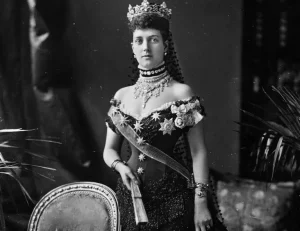 Princess Alexandra of Denmark was the wife of Queen Victoria’s eldest son, King-Emperor Edward VII., known as Queen of the United Kingdom, the British Dominions, and Empress of India from 1901 to 1910. Before the coronation of her husband, they held the titles ‘Prince and Princess of Wales ‘the longest time in history. Her own father was king himself, Christian IX. of Denmark. She was notably popular as Queen consort, despite only being allowed to carry out minor engagements. She was devoted to her charity work throughout her entire life, enjoyed social activities such as dancing, horse riding and hunting. She was a devoted mother and grandmother, having had six children herself. She was however not invited to numerous royal visits abroad: her “meddling” in diplomatic matters concerned the King’s secretaries. She outlived her husband by fifteen years, making her Dowager Queen for the rest of her life.
Princess Alexandra of Denmark was the wife of Queen Victoria’s eldest son, King-Emperor Edward VII., known as Queen of the United Kingdom, the British Dominions, and Empress of India from 1901 to 1910. Before the coronation of her husband, they held the titles ‘Prince and Princess of Wales ‘the longest time in history. Her own father was king himself, Christian IX. of Denmark. She was notably popular as Queen consort, despite only being allowed to carry out minor engagements. She was devoted to her charity work throughout her entire life, enjoyed social activities such as dancing, horse riding and hunting. She was a devoted mother and grandmother, having had six children herself. She was however not invited to numerous royal visits abroad: her “meddling” in diplomatic matters concerned the King’s secretaries. She outlived her husband by fifteen years, making her Dowager Queen for the rest of her life.
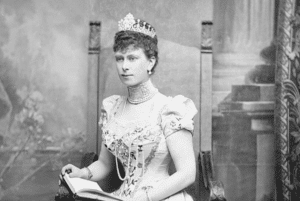 Princess Mary of Teck, wife of King-Emperor George V., was Queen consort from 1910 to 1936. Not long before her marriage to the then Prince of Wales, she was engaged to Prince Albert Victor, eldest son of the aforementioned Princess Alexandra and Edward VII., but unfortunately the prince passed away suddenly during the influenza pandemic. She was loved by the nation, supporting her husband through the World War and the changes arising from the aftermath. They had six children, five of which lived to adulthood: after her husband’s death, she became Queen Mother, at the event of coronation of her eldest son, Edward VIII., and, after his abdication (his wife, divorcée Wallis Simpson, never got the title of royal consort as they married after the abdication), her second-born son, George VI. She died during the reign of Queen Elisabeth II., though before her official coronation ceremony.
Princess Mary of Teck, wife of King-Emperor George V., was Queen consort from 1910 to 1936. Not long before her marriage to the then Prince of Wales, she was engaged to Prince Albert Victor, eldest son of the aforementioned Princess Alexandra and Edward VII., but unfortunately the prince passed away suddenly during the influenza pandemic. She was loved by the nation, supporting her husband through the World War and the changes arising from the aftermath. They had six children, five of which lived to adulthood: after her husband’s death, she became Queen Mother, at the event of coronation of her eldest son, Edward VIII., and, after his abdication (his wife, divorcée Wallis Simpson, never got the title of royal consort as they married after the abdication), her second-born son, George VI. She died during the reign of Queen Elisabeth II., though before her official coronation ceremony.
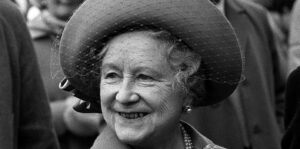 Lady Elisabeth Bowes-Lyon was Queen of the United Kingdom and the Dominions of the British Commonwealth from 1936 to 1952 as the wife of King George VI. As Duchess of York (before Edward VIII.’s abdication), she undertook a variety of public engagements and became known for her consistently cheerful appearance. As Queen consort, she accompanied her husband on diplomatic tours to France and North America, provided moral support for the nation during the war and remained a popular member of the family her entire life. After the death of her husband, she was known as Queen Elisabeth the Queen Mother. She lived till the age of 101.
Lady Elisabeth Bowes-Lyon was Queen of the United Kingdom and the Dominions of the British Commonwealth from 1936 to 1952 as the wife of King George VI. As Duchess of York (before Edward VIII.’s abdication), she undertook a variety of public engagements and became known for her consistently cheerful appearance. As Queen consort, she accompanied her husband on diplomatic tours to France and North America, provided moral support for the nation during the war and remained a popular member of the family her entire life. After the death of her husband, she was known as Queen Elisabeth the Queen Mother. She lived till the age of 101.
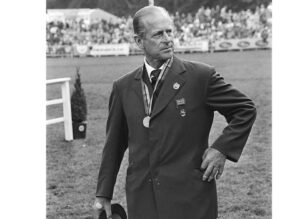 The late Prince Phillip, Duke of Edinburgh was the consort of his wife, the reigning monarch for almost 70 years, making him the longest-serving royal consort in history: he served as Prince consort from 1952 until his passing in 2021. As consort to the Queen, Philip supported his wife in her new duties as sovereign, accompanying her to ceremonies such as the State Opening of Parliament in various countries, state dinners, and tours abroad. As chairman of the Coronation Commission, he was the first member of the royal family to fly in a helicopter. Philip was patron of 800 organisations, focused on the environment, industry, sport, and education. His first solo engagement as Duke of Edinburgh was in March 1948, followed by thousands of more. In April 2009, Philip became the longest-serving British royal consort. He became the oldest-ever male British royal in February 2013 and the third-longest-lived member of the British royal family (following Princess Alice, Duchess of Gloucester, and Queen Elizabeth the Queen Mother) in April 2019. Since 1952, he has completed 22,219 solo engagements and 5,493 speeches until his official retirement announced in 2017. Their marriage, according to Queen Elisabeth II., was remarkable: during their Golden Wedding Anniversary, Her Majesty said, “He has quite simply been my strength and stay all these years, and I, and his whole family, and this and many other countries, owe him a debt greater than he would ever claim, or we shall ever know”.
The late Prince Phillip, Duke of Edinburgh was the consort of his wife, the reigning monarch for almost 70 years, making him the longest-serving royal consort in history: he served as Prince consort from 1952 until his passing in 2021. As consort to the Queen, Philip supported his wife in her new duties as sovereign, accompanying her to ceremonies such as the State Opening of Parliament in various countries, state dinners, and tours abroad. As chairman of the Coronation Commission, he was the first member of the royal family to fly in a helicopter. Philip was patron of 800 organisations, focused on the environment, industry, sport, and education. His first solo engagement as Duke of Edinburgh was in March 1948, followed by thousands of more. In April 2009, Philip became the longest-serving British royal consort. He became the oldest-ever male British royal in February 2013 and the third-longest-lived member of the British royal family (following Princess Alice, Duchess of Gloucester, and Queen Elizabeth the Queen Mother) in April 2019. Since 1952, he has completed 22,219 solo engagements and 5,493 speeches until his official retirement announced in 2017. Their marriage, according to Queen Elisabeth II., was remarkable: during their Golden Wedding Anniversary, Her Majesty said, “He has quite simply been my strength and stay all these years, and I, and his whole family, and this and many other countries, owe him a debt greater than he would ever claim, or we shall ever know”.
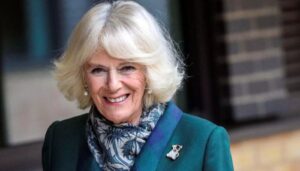 And what will the future hold? If Charles, the current Prince of Wales ascends the throne, his second wife Camilla, Duchess of Cornwall will take on the title Princess consort according to Clarence House. The usage of that title will most probably be the first time in British history, as well the wife and the monarch himself being divorcées both.
And what will the future hold? If Charles, the current Prince of Wales ascends the throne, his second wife Camilla, Duchess of Cornwall will take on the title Princess consort according to Clarence House. The usage of that title will most probably be the first time in British history, as well the wife and the monarch himself being divorcées both.
Source of pictures:
- Paolo Roversi, https://www.bbc.com/news/uk-59922124
- https://www.mutualart.com/Artwork/Portrait-of-Prince-George-of-Denmark–16/428DC9CC86F13952
- https://artuk.org/discover/artworks/queen-caroline-of-brandenburg-ansbach-16831737-55707
- https://www.englishmonarchs.co.uk/hanover_14.html
- https://artuk.org/discover/artworks/queen-caroline-17681821-princess-caroline-amelia-elizabeth-daughter-of-charles-duke-of-brunswick-wolfenbuttel-queen-of-george-iv-212817
- https://www.historyofroyalwomen.com/adelaide-of-saxe-meiningen/adelaide-saxe-meiningen-good-queen/
- https://www.thebritishmonarchy.co.uk/post/prince-albert-of-saxe-coburg-and-gotha-was-born
- https://www.thoughtco.com/biography-of-queen-alexandra-4582642
- https://www.historyextra.com/period/20th-century/who-queen-mary-teck-life-wife-george-v-did-she-steal-was-kleptomaniac-collection-facts/
- https://www.royal.uk/queen-elizabeth-queen-mother
- https://www.nationalww2museum.org/about-us/notes-museum/prince-philip-duke-edinburgh-1921-2021
- https://www.thenews.com.pk/latest/920016-queen-ignores-harry-meghan-in-christmas-message-includes-william-and-kate




